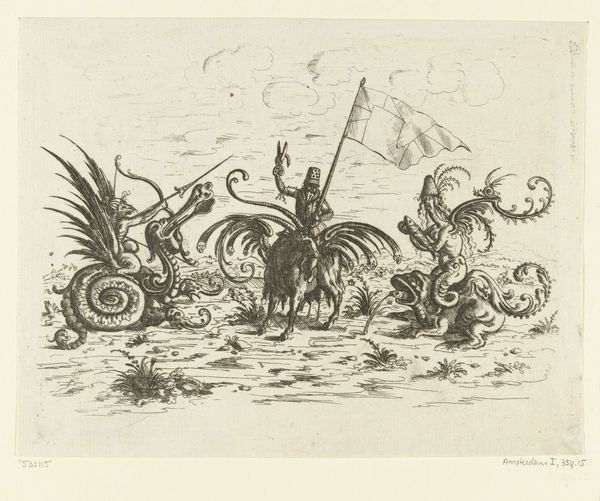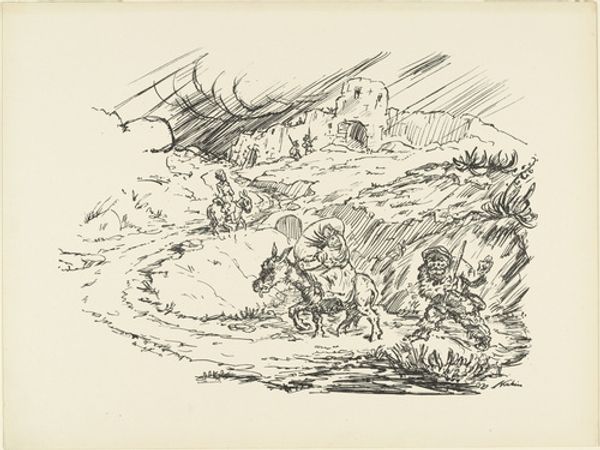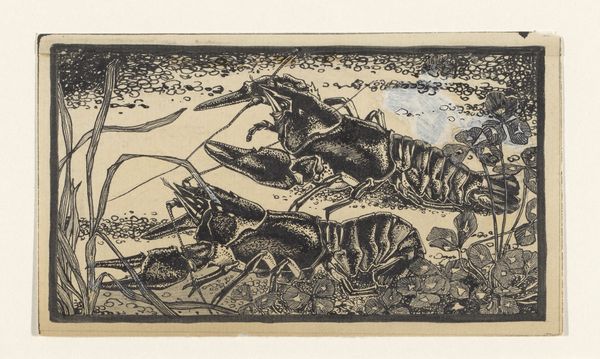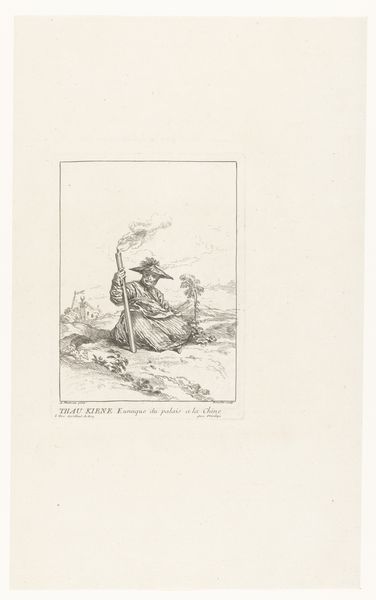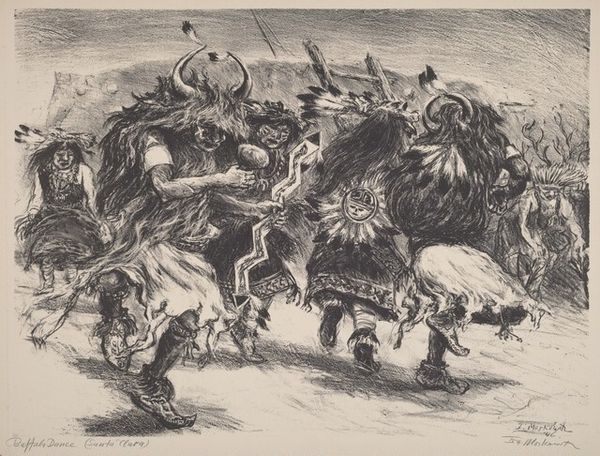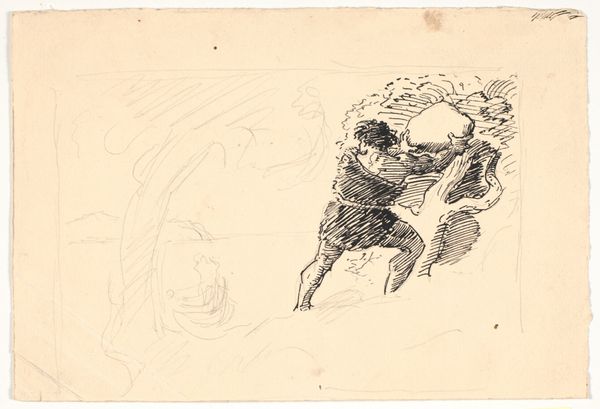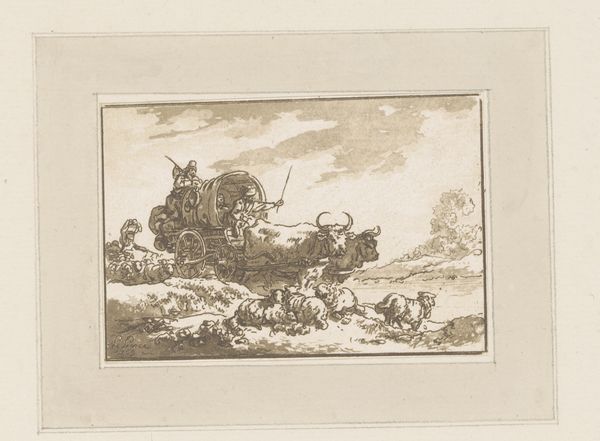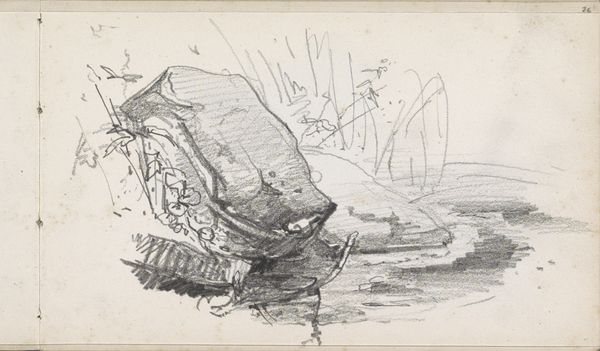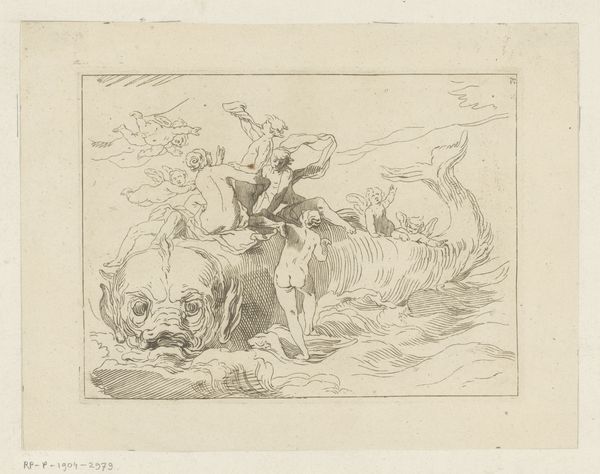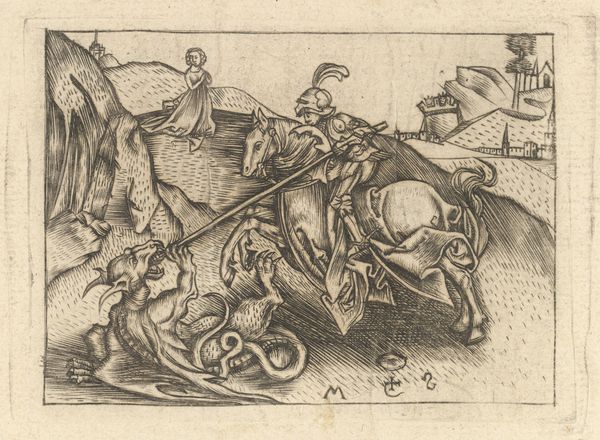
drawing, ink
#
drawing
#
animal
#
landscape
#
figuration
#
ink
#
line
#
symbolism
Dimensions: 218 mm (height) x 285 mm (width) (bladmaal)
Curator: Here we have Niels Skovgaard’s “Lindormen i Brande” from 1920, currently held at the SMK, Statens Museum for Kunst. It’s rendered in ink, a powerful drawing that embodies the Symbolist movement. Editor: Woah, okay, so my first thought is just pure, unadulterated tension. I feel like I've stumbled into some primal showdown, a battle of mythical proportions frozen in ink. It's dramatic, with those stormy clouds practically mirroring the struggle below. Curator: It’s fascinating how Skovgaard uses line work to depict such intensity. Consider the political and social climate of the time; Denmark, like many European nations, was grappling with the aftermath of World War I and the rise of new ideologies. This piece might symbolize the struggle against oppressive forces. Editor: Definitely. And that Lindorm – part dragon, part serpent – strangling that poor bull! It’s disturbing, but also strangely beautiful, you know? The composition feels almost claustrophobic; those animals are battling in a landscape that’s reduced to simple hatching, giving it this otherworldly feel. I wonder what Brande means in this context? Curator: Brande is a town in Denmark. The title directly places the mythical creature in a specific location, grounding the symbolism in a local context and giving it perhaps a warning to its inhabitants about internal conflict. Skovgaard was deeply invested in Danish folklore and history, often using mythical figures to explore contemporary issues. Editor: Right, the local gives it a punch. It almost feels like a bad omen hanging over this ordinary place. Looking at the bull—usually a symbol of strength—but here it’s clearly distressed and being overcome by the Lindorm. It evokes a sense of vulnerability. The dark sky even looks like ink bleeding down the paper. What do you think is the emotional resonance Skovgaard was going for? Curator: I see it as a stark representation of internal struggles, the constant battle within oneself, perhaps paralleling Denmark's own identity crisis during this period. The symbolism creates an anxious atmosphere about national strength and the vulnerability in the face of these internal battles. Editor: It's that universality mixed with cultural specificity that really grabs me, it makes me feel like he has tapped into something really raw. It reminds us that monsters are, in fact, within ourselves too. Curator: Absolutely. The artwork is successful as a reminder of the fragility of cultural stability. It serves as an eerie historical foreshadowing that transcends time.
Comments
No comments
Be the first to comment and join the conversation on the ultimate creative platform.

